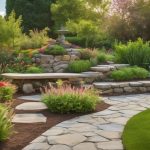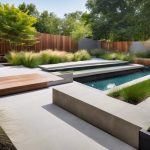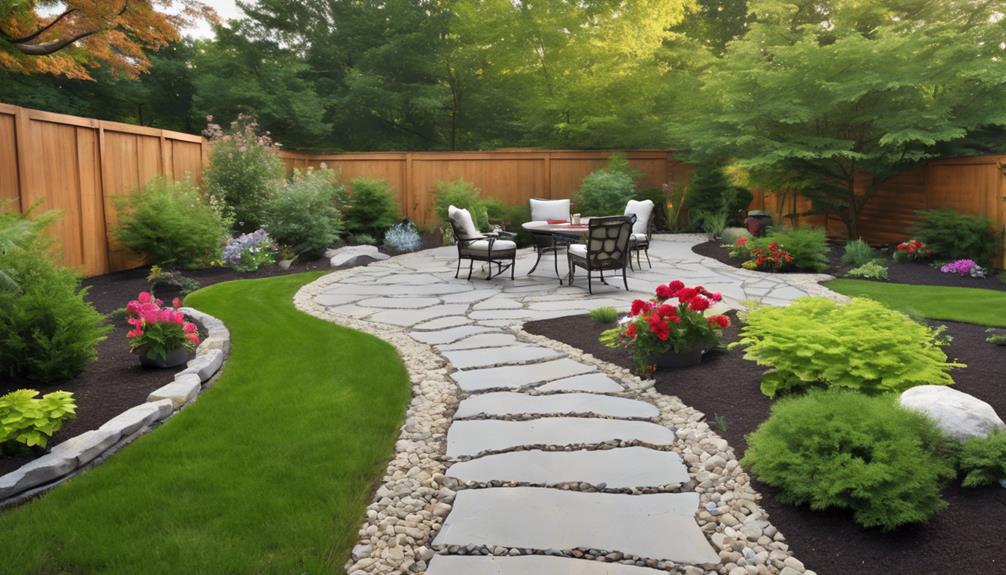
Beginner’s Guide to DIY Hardscaping Techniques
23 October 2024
Stylish Hardscaping Ideas for Modern Gardens
23 October 2024Beginners should consider DIY hardscaping to transform their outdoor spaces while developing practical skills. Engaging in these projects fosters a deeper understanding of landscape design and enhances problem-solving abilities.
Furthermore, it allows for personalised expression, creating a unique environment that reflects individual tastes. The economic advantage of saving on labour costs provides more flexibility in the budget for quality materials.
Successful execution leads to a profound sense of accomplishment and can improve the value of the property. By exploring this creative pursuit, novices can uncover the satisfaction of completing a project while gaining insights into effective planning and design strategies.
Introduction to DIY Hardscaping
DIY hardscaping offers homeowners an opportunity to enhance their outdoor spaces while enjoying the satisfaction of completing a project themselves.
Understanding the benefits of this approach, along with the essential tools required, can significantly streamline the process.
This introduction sets the stage for exploring the advantages and necessary equipment to embark on your hardscaping venture.
Benefits of DIY Hardscaping
Embarking on a hardscaping project offers numerous advantages that extend beyond mere aesthetics. Engaging in DIY hardscaping empowers individuals to create customised outdoor spaces that reflect their unique vision.
Additionally, it fosters a deeper understanding of landscape design principles, enhancing one's ability to make informed decisions throughout the process. The hands-on nature of DIY projects cultivates crucial skills, such as project management and problem-solving, which can be invaluable in future endeavours.
Economically, undertaking hardscaping tasks independently can lead to significant savings on labour costs, allowing for the allocation of funds to higher-quality materials.
Ultimately, DIY hardscaping not only beautifies outdoor environments but also enriches the homeowner's experience, creating a lasting sense of accomplishment and connection to the space.
Essential Tools Needed
Equipping oneself with the right tools is fundamental for a successful hardscaping project, as each tool serves a specific purpose in transforming outdoor spaces.
Key tools include a spade for digging, a level to ensure proper alignment, and a tamper for compacting soil and materials. A masonry saw is invaluable for cutting stones and pavers with precision, while a wheelbarrow facilitates the transport of heavy materials.
Furthermore, a rubber mallet aids in setting stones without damaging them, and a measuring tape guarantees accurate dimensions. Safety gear, including gloves and goggles, is also essential to protect against injury.
Essential Tools for Success
Understanding crucial tools for successful hardscaping involves considering diverse factors that influence the project's outcome.
Local climate conditions, soil type and drainage, along with patterns of plant growth, play critical roles in determining the right tools and techniques needed.
Local Climate Considerations
When embarking on a DIY hardscaping project, your local climate plays a crucial role in determining the materials and techniques required for success.
Understanding the specific climate conditions can guide your choices, ensuring both durability and aesthetic appeal.
Consider the following factors:
- Temperature Extremes: Select materials that can withstand local heat or cold without cracking or warping.
- Precipitation Levels: Choose drainage solutions and materials that effectively manage moisture in wet climates.
- Sun Exposure: Opt for UV-resistant materials that can endure prolonged sunlight without fading.
- Wind Patterns: Consider windbreaks or anchoring techniques to protect structures in windy environments.
Soil Type and Drainage
Local climate considerations set the stage for evaluating soil type and drainage, both of which are essential in hardscaping projects. Understanding these factors can greatly influence the longevity and stability of your hardscape features.
When assessing soil and drainage, consider the following:
- Soil Composition: Analyse the proportions of sand, silt, and clay, as these affect water retention and stability.
- Permeability: Evaluate how quickly water drains through the soil, which is crucial for preventing erosion.
- Topography: Identify slopes or depressions that may influence water flow and drainage patterns.
- Moisture Levels: Monitor seasonal changes to gauge how soil moisture impacts your hardscaping materials.
Mastering these elements guarantees a solid foundation for your DIY hardscaping endeavours.
Plant Growth Patterns
Successful hardscaping projects hinge on recognising plant growth patterns, which can greatly impact the comprehensive design and functionality of your outdoor space.
Understanding these patterns allows you to create harmonious landscapes that support both hardscaping and plant life.
Key considerations include:
- Sunlight Exposure: Identify areas receiving full sun, partial shade, or full shade to choose appropriate plants.
- Growth Habits: Consider whether plants grow upright, sprawling, or have specific seasonal growth cycles.
- Water Requirements: Group plants with similar hydration needs to optimise irrigation and reduce water waste.
- Root Structure: Be aware of how plant roots spread, preventing damage to hardscape elements.
Incorporating these insights will enhance your hardscaping endeavours, ensuring a cohesive and thriving outdoor environment.
Project Planning Essentials
Effective project planning is essential for successful hardscaping initiatives.
Begin by clearly defining your project scope to ensure all aspects are considered, from layout to materials.
Furthermore, using quality materials wisely and incorporating unique textures can enhance the overall aesthetic and durability of your project.
Define Your Project Scope
Defining the project scope is a crucial step in any hardscaping endeavour, as it lays the foundation for both design and execution. A well-defined scope enables you to allocate resources effectively, anticipate potential challenges, and ensure a cohesive vision throughout the project.
Consider the following elements when defining your scope:
- Project Goals: What do you wish to achieve? A patio, pathway, or retaining wall?
- Budget Constraints: Determine your financial limits to guide material selection and labour.
- Timeline: Establish a realistic timeframe for project completion, factoring in weather and material availability.
- Site Assessment: Evaluate the physical characteristics of your space, including terrain and existing structures.
Use Quality Materials Wisely
When embarking on a hardscaping project, selecting quality materials can significantly influence the longevity and aesthetic appeal of your design. Dedicate time to choosing materials that not only enhance visual charm but also stand the test of time.
Consider the following factors when making your selections:
- Durability: Choose materials that can withstand extreme weather conditions and heavy foot traffic.
- Compatibility: Ensure that materials harmonise with existing structures and landscaping elements.
- Maintenance: Opt for materials that require minimal upkeep, allowing you to relish your space without constant care.
- Sustainability: Select eco-friendly options that contribute to environmental health while providing enduring beauty.
Incorporating Unique Textures
Incorporating unique textures into your hardscaping design not only enhances visual interest but also creates a multi-dimensional space that engages the senses.
By thoughtfully integrating varied materials, you can establish a captivating and dynamic environment.
Consider these elements to enhance your design:
- Rough stones for rugged pathways that evoke a natural feel.
- Smooth pavers to contrast with uneven surfaces, providing a tranquil walking experience.
- Textured concrete with patterns or stamps that add artistic flair.
- Natural wood elements, such as timber borders, which introduce warmth and organic contrast.
Mastering texture selection will elevate your hardscaping project, ensuring it is not just functional but also a reflection of your personal aesthetic.
Cost-Effective Landscape Enhancement
Achieving a mesmerising outdoor space does not have to come with a hefty price tag; creativity and strategic planning can be the keys to cost-effective landscape improvement. By focusing on hardscaping elements, such as pathways and seating areas, you can enhance your landscape without overwhelming your budget.
| Strategy | Description |
|---|---|
| Reuse Materials | Utilise reclaimed bricks or stones for a unique appearance. |
| DIY Installation | Save on labour costs by personally installing hardscapes. |
| Plan for Phased Projects | Spread costs over time by tackling sections of your landscape gradually. |
Implementing these strategies allows you to elevate aesthetic appeal while maintaining financial prudence, ultimately leading to a rewarding DIY hardscaping experience.
Garden Design Innovations
Garden design innovations are transforming outdoor spaces by introducing advanced techniques and creative solutions.
From sophisticated patio paving methods to efficient paver installation strategies, these innovations enhance both functionality and aesthetic appeal.
Furthermore, the integration of enchanting water features can elevate the overall design, creating a serene and inviting environment.
Patio Paving Techniques
Exploring different patio paving techniques can greatly enhance the functionality and aesthetics of outdoor spaces.
Mastering these techniques allows for creative expression while ensuring durability and ease of maintenance.
Here are four innovative approaches to consider:
- Interlocking Pavers: These versatile units create robust, visually appealing patterns that can adapt to any design vision.
- Natural Stone: Utilising slate, limestone, or granite imparts a timeless elegance and unique texture, making each installation distinct.
- Concrete Slabs: Available in various sizes and finishes, concrete can be stamped or stained to replicate high-end materials at a fraction of the cost.
- Gravel: This permeable option promotes drainage and offers a rustic charm, ideal for informal settings.
Paver Installation Techniques
The choice of patio paving techniques lays the groundwork for effective paver installation, which is essential for creating a durable and visually appealing outdoor space.
Mastering these techniques will enhance your hardscaping skills and ensure longevity in your projects.
Key aspects to consider include:
- Base Preparation: Ensure a stable foundation by compacting the subgrade and adding a gravel base.
- Paver Layout: Plan your pattern prior to installation to optimise aesthetics and functionality.
- Joint Filling: Use sand or polymeric materials in joints to prevent weed growth and stabilise pavers.
- Edge Restraints: Implement edge restraints to maintain the integrity and alignment of the pavers over time.
Water Feature Integration Techniques
Harmony in outdoor spaces can be considerably enhanced through the thoughtful integration of water features. These elements not only improve aesthetic appeal but also provide a tranquil ambience.
To effectively incorporate water features into your hardscaping project, consider the following techniques:
- Placement: Position water features strategically to create focal points or to complement existing landscape elements.
- Scale: Ensure that the size of the water feature is proportionate to the surrounding space, avoiding overwhelm or insignificance.
- Materials: Select materials that harmonise with your hardscape, such as stone or concrete, to maintain a cohesive design.
- Lighting: Utilise soft lighting to accentuate the water feature at night, enhancing its beauty and creating an inviting atmosphere.
Master these techniques to uplift your outdoor environment.
Unexpected Weather Impacts
Weather can greatly influence the success of your hardscaping projects, necessitating careful consideration of material selection.
Opting for weather-resistant materials and making seasonal planting adjustments can help mitigate potential damage.
Furthermore, exploring budget-friendly material alternatives can ensure durability without compromising your finances.
Weather-Resistant Material Selection
When commencing a DIY hardscaping project, selecting weather-resistant materials is crucial to ensure longevity and durability against unexpected weather impacts.
Utilising materials that can withstand the elements will not only enhance the aesthetics of your project but also reduce maintenance and replacement costs over time.
Consider the following materials for ideal performance:
- Concrete Pavers: Resistant to cracking and fading, ideal for diverse climates.
- Natural Stone: Offers exceptional durability and a timeless appearance.
- Porcelain Tiles: Highly resistant to moisture and temperature fluctuations.
- Composite Decking: Combines the appearance of wood with improved resistance against rot and insects.
Seasonal Planting Adjustments
Seasonal planting adjustments are essential for maximising the success of your hardscaping project, particularly in the face of unexpected weather impacts.
A proactive approach ensures that your landscape flourishes despite climatic variances. Consider the following strategies:
- Monitor Local Weather Trends: Stay informed about seasonal shifts and anomalies that could affect plant growth.
- Select Resilient Plant Varieties: Choose species known for their adaptability to fluctuating temperatures and moisture levels.
- Implement Protective Measures: Use mulch or frost covers to shield vulnerable plants during extreme weather conditions.
- Adjust Watering Practices: Modify irrigation schedules based on rainfall patterns to prevent root rot or drought stress.
Budget-Friendly Material Alternatives
Adjustments in your planting strategy can lead to reconsiderations in the materials used for hardscaping, particularly when considering potential weather-related challenges.
Selecting budget-friendly alternatives not only protects your investment but also enhances the resilience of your outdoor space.
Consider these materials that can withstand unexpected weather impacts:
- Recycled Concrete: Cost-effective and durable, making it ideal for pathways and borders.
- Crushed Stone: Offers excellent drainage whilst adding texture and visual interest.
- Pavers Made from Reclaimed Materials: Eco-friendly and often less expensive than new options.
- Timber Alternatives: Composite materials imitate wood without the susceptibility to rot or warping.
Why Choose TKL Birmingham Gardener
Choosing TKL Birmingham Gardener for your hardscaping projects can transform your outdoor space into a stunning landscape.
With a commitment to excellence, TKL Birmingham Gardener combines expertise and innovative design to deliver exceptional results. Their seasoned professionals understand the nuances of diverse materials and techniques, ensuring that your project is not only aesthetically pleasing but also structurally sound.
TKL's attention to detail and personalised approach allows for tailored solutions that align with your vision and budget. Furthermore, their extensive knowledge of local flora and environmental considerations enhances the sustainability of your hardscaping endeavours.
Common DIY Hardscaping Questions
As you embark on your DIY hardscaping venture, it's natural to have questions that arise during the planning and execution stages. Common inquiries include the types of materials best suited for your project, the tools required for effective installation, and the estimated costs involved.
Beginners often wonder about proper drainage techniques to prevent water accumulation and how to ensure the longevity of their hardscaping features. Furthermore, understanding local zoning laws and permits is vital to avoid potential legal issues.
Many also seek guidance on design principles to enhance visual appeal and functionality. Addressing these questions with thorough research and expert advice will empower you to navigate your project confidently and achieve a durable, aesthetically pleasing result.
Final Project Review Checklist
Completing a DIY hardscaping project brings a sense of accomplishment and satisfaction, but it is essential to conduct a thorough final project review to ensure everything meets your expectations.
A meticulous assessment not only verifies quality but also enhances the longevity of your work.
Consider the following checklist to guide your review process:
- Structural Integrity: Inspect all elements for stability and secure attachment.
- Aesthetic Appeal: Evaluate the visual harmony of colours, materials, and layout.
- Drainage and Functionality: Confirm proper water flow and usability of pathways or patios.
- Safety Standards: Ensure that all installations comply with local codes and regulations.



